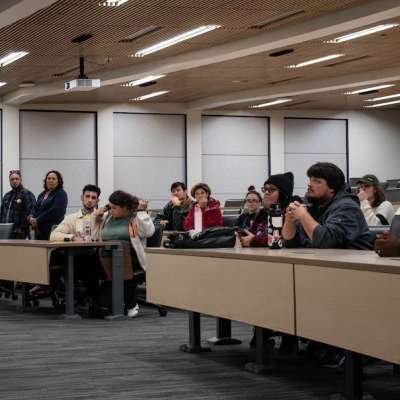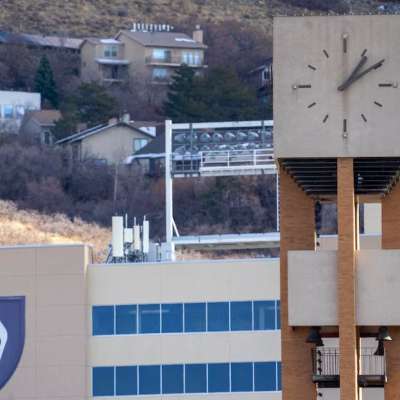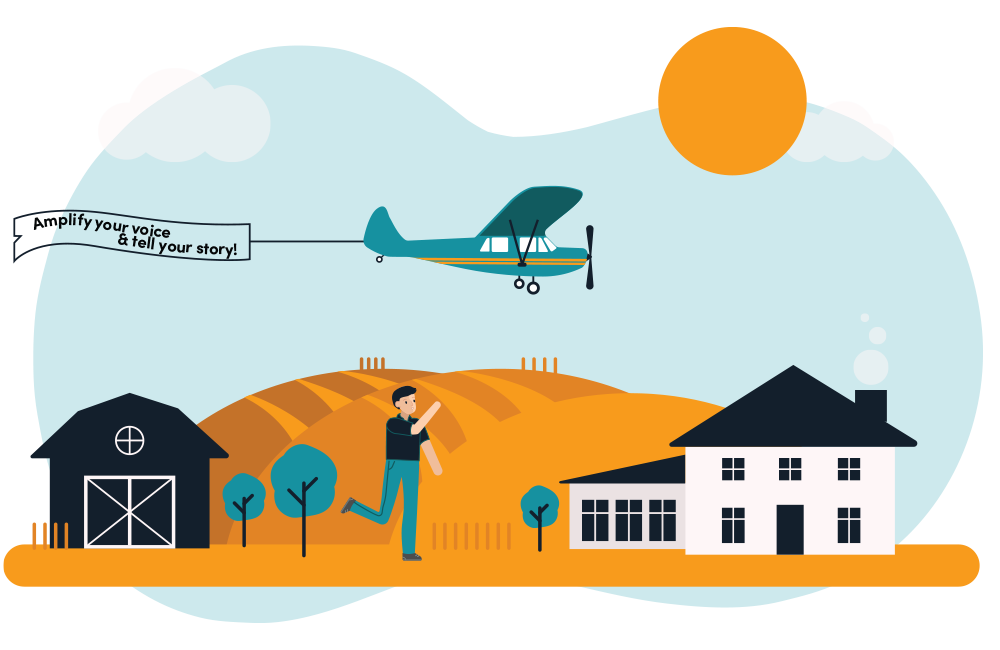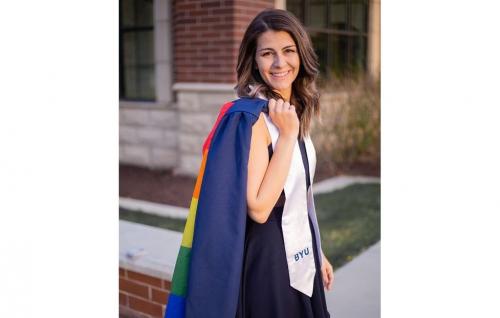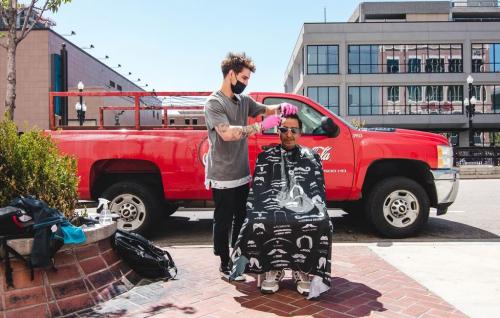For nearly two years, the home office has been a common workplace for many Americans, allowing them to remain productive and employed during this pandemic. This flexibility is something many people with disabilities have long sought.
“The students I work with have disabilities, and most work while going to school,” said Fernando Quintero, accessibility adviser at the Disability Resource Center at Salt Lake Community College. “They have been able to work from home, which has made life much easier for them.”
He says students are more productive without having to deal with going to school and working in person. It gives them more energy to use elsewhere, making them more productive at work and able to spend more time with their families.
These students, Quintero said, often prefer to work at home because they can work anywhere in the house, take breaks as needed, have easy access to the bathroom, and health management tools.
“People with disabilities have been asking for remote work as an accommodation for years, and the pandemic shows it’s possible,” said Karolyn Campbell, executive director of the Disabled Rights Action Committee, a nonprofit in Salt Lake City.
The Americans with Disabilities Act, passed in 1990, requires employers to provide reasonable accommodations to people with disabilities, except when an accommodation would cause undue hardship.
“Prior to the pandemic, people with disabilities were told that remote work options were not feasible or realistic, and they were not part of reasonable accommodations in a workplace environment,” she said. “Accessibility isn’t just good for employees, it’s good for employers, too.” Board members of the Disabled Rights Action Committee and people in the disability community that Campbell spoke with have a “better late than never” attitude.
“It’s nice that we have these opportunities now,” she said, “but frustrating that they only came about because able-bodied folks needed it.”
Remote work does not benefit all
The shift to remote work has benefitted some, but a number of people with disabilities hold jobs that have to be done in person. This means employers and co-workers need to think about how they can accommodate these colleagues.
According to the Bureau of Labor Statistics, 8.3% of employed people with a disability work in the leisure and hospitality sector. Employment in this sector fell by 8.2 million jobs in the first two months of the pandemic and is still 3.9 million jobs below February 2020 levels.
“It’s been really hard on people with intellectual, cognitive and developmental disabilities who maybe don’t have the same training and skills to work in professional environments,” said Matthew Wappett, executive director of the Utah State University Institute for Disability Research, Policy and Practice.
He said people with intellectual, cognitive and developmental disabilities have the highest rate of unemployment in the United States at 70%. But employers are slowly becoming more inclusive to people with disabilities..
“It used to be when you graduated from high school, you had special education during that time and then there was nothing,” he said. “That’s still the case especially with intellectual, cognitive, and developmental disabilities, but more and more I’m seeing parents pushing to have their kids have job opportunities and supportive employment where the end of school isn’t the end of the support.”
Disclosure dilemma
Avery Berschauer lives in Seattle and hosts the podcast “Basically Blind” where she talks about her experience with visual impairment and accessibility. She changed careers from working as a marketing professional to becoming a diversity, equity, inclusion and accessibility consultant. She found it difficult to work in a traditional office.
“When I was in the office environment, there were a lot of people who didn’t know how to interact with me,” Berschauer said in an interview. “Having the power to set up my office exactly the way I want, knowing I’m not going to have awkward comments like ‘whoa that screen is huge, you must really be blind’ are all beneficial.”
When people are working remotely, employers and co-workers aren’t always privy to what assistive technologies, mobility devices, or other tools people are using, or if they are using different strategies to get their work done.
In Berschauer’s experience, disclosure isn’t always a choice. “I’ve been put in [interview] situations where I feel like I need to disclose that I have a vision condition. I can’t make great eye contact and my eyes shake a little bit,” she said.
Socially, people have made comments to her that they thought she was on drugs because of her eye movement, and she feels like she needs to get out in front of people’s assumptions before they assume wrong.
“Sometimes it didn’t seem to impact things, but other times I could feel a shift in the room,” she said. “You could tell at that point they made up their minds and weren’t taking me seriously.”
Disclosing a disability is a dilemma. It can help someone get the accommodations they need, but it can also open the door to discrimination.
“People have ableist attitudes and you just don’t know,” Campbell said. “It’s kind of roulette with your employer whether you are going to get someone who is understanding, who is going to provide those resources you need to do your job ... It introduces a lot of anxiety for people.”
Intentional change
Inaccessibility is a “creativity crisis,” Wappett said, noting many employers are resistant to changing standard business practices.
“Reasonable accommodation is a very fungible legal concept … ‘reasonable’ is a messy term,” he said.
For example, some job applications will list needing to be able to lift 50 pounds. “Well, what if somebody else helped them pick up the 50 pounds for that part of their job, and they did everything else? What about assistive technology? Driving a forklift?” Wappett said.
Berschauer says for a work environment to truly be accessible and inclusive, accessibility needs to be a priority.
“It’s a matter of attitudes,” she said. “People don’t account for inclusion and accessibility at the beginning of the planning process, and it’s something they try to plug in later. It can’t be an afterthought.”
A concept called “universal design” can be implemented to help standardize accessibility. Universal design considers how someone will interact with the environment.
“[It’s] flexible in the approach, providing multiple means of engagement and representation, and actions of expression,” said Quintero, with Salt Lake Community College.
“There are a million little ways that environments become inaccessible,” Campbell said, “and socially we need people who are thinking about building spaces and environments for the widest range of minds and bodies.”
Inclusive from the start
Experts say for employers to make the workplace accessible they should reexamine the application and interview process.
“Starting with the format of the job listing online, making it screen reader accessible, making sure you are not including items in your list of qualifications that are not really necessary to the job unless they are really indispensable to the job,” Campbell said.
Next, employers need to examine the job qualifications.
“Think about how people with disabilities might be able to do that work,” Campbell said, “and phrase it in a way that’s inclusive of people who have a wide range of experience and backgrounds.”
Holding interviews virtually eases the burden on applicants and attracts a more diverse candidate pool, Campbell said. When she conducts interviews, she checks with applicants to make sure they can see and hear her and that they are able to communicate.
In the end, Wappett said, real change requires empathy and compassion. “There are benefits to [diversity and inclusion] with a healthier company, a more diverse workforce and it may help your bottom line but the real reason should be, ‘just be a good person, damnit.’”
Juliana DeMay wrote this story as a journalism student at Salt Lake Community College. It is published as part of a collaborative including nonprofits Amplify Utah and The Salt Lake Tribune.
###
NOTE TO MEDIA PARTNERS PUBLISHING WORK We also request organizations include the following text either at the beginning or end of the story text:
This story is jointly published by nonprofits Amplify Utah and [Your Media Organization's Name] to elevate diverse perspectives in local media through emerging journalism. Juliana DeMay wrote this story as a journalism student at Salt Lake Community College. For more stories from Amplify Utah, visit amplifyutah.org/use-our-work.








